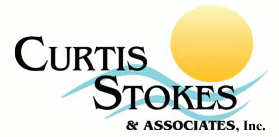Call Us: 855.266.5676 | 954.684.0218
Email Us: info@curtisstokes.net 
Call Us: 855.266.5676 | 954.684.0218
Email Us: info@curtisstokes.net 
George and Pat Hospodar
While planning a trip from the Atlantic to the Great Lakes is not as challenging as the Lewis and Clark expedition, a certain amount of planning is a good idea. Some things to consider in your planning are: how much time you want to take for the journey, how many hours you want to travel each day, how comfortable you are traveling on the open ocean, and what is the minimum clearance your boat needs to pass under bridges.
The longest route traveling from the south is along the northeast Atlantic coast sailing past the spectacular sites of Nova Scotia. On arriving at this famed seagoing area of the world, you will then enter the Saint Lawrence Seaway north of Quebec, Canada, and follow the Seaway directly to Lake Ontario. The enticements to take this route are that you would view the beautiful sites of the New England coast topped off by the quaint ruggedness of Nova Scotia and be able to visit the old city of Quebec and bustling Montreal. However, following this “Down East” route will also add additional time to the trip compared to other options, as well as more days on the open and unpredictable Atlantic Ocean.
A second route will take you though New York Harbor and along the Hudson River to Waterford, New York, where you will continue north through the Champlain Canal into Lake Champlain and on to the Saint Lawrence Seaway eventually arriving in Lake Ontario. Traveling through this area is scenic and filled with early American history. Although this route is considerably shorter than the Atlantic one, some of the bridges are charted as low as 17′ – be aware!
 The third route will take you up the Hudson River again to Waterford, New York, but this time you will turn west through the 363-mile Erie Canal across New York State to Buffalo, New York, on Lake Erie. Although traveling the full length of the historical waterway is scenic and educational, the route has two problems: There are bridges on the western half of the canal charted as low as 15′ and you will exit the canal in Lake Erie, not Lake Ontario. If you wish to continue your Great Loop journey through the Trent-Severn Waterway, you want to enter the Great Lakes in Lake Ontario, not Lake Erie.
The third route will take you up the Hudson River again to Waterford, New York, but this time you will turn west through the 363-mile Erie Canal across New York State to Buffalo, New York, on Lake Erie. Although traveling the full length of the historical waterway is scenic and educational, the route has two problems: There are bridges on the western half of the canal charted as low as 15′ and you will exit the canal in Lake Erie, not Lake Ontario. If you wish to continue your Great Loop journey through the Trent-Severn Waterway, you want to enter the Great Lakes in Lake Ontario, not Lake Erie.
The fourth option follows the Erie Canal about halfway across New York State into the Oswego Canal that leads directly to Lake Ontario. Although we were told the minimum bridge clearance on eastern half of the Erie Canal was about 21′ 6″ We found out the hard way (by hitting a bridge with our anchor light) that the minimum clearance is actually just over 20′. It is advisable that before traveling through any on the New York State Canals you check bridge heights with the Canal Authority at http://www.canals.ny.gov/boating/bridgeheights.html or by calling 800 422 1825.
George and Pat Hospodar, authors of “Reflection on America’s Great Loop” published by Atlantic Publishing.
Back to the Great Loop Page

© 2024 Curtis Stokes & Associates, Inc. | All rights reserved.